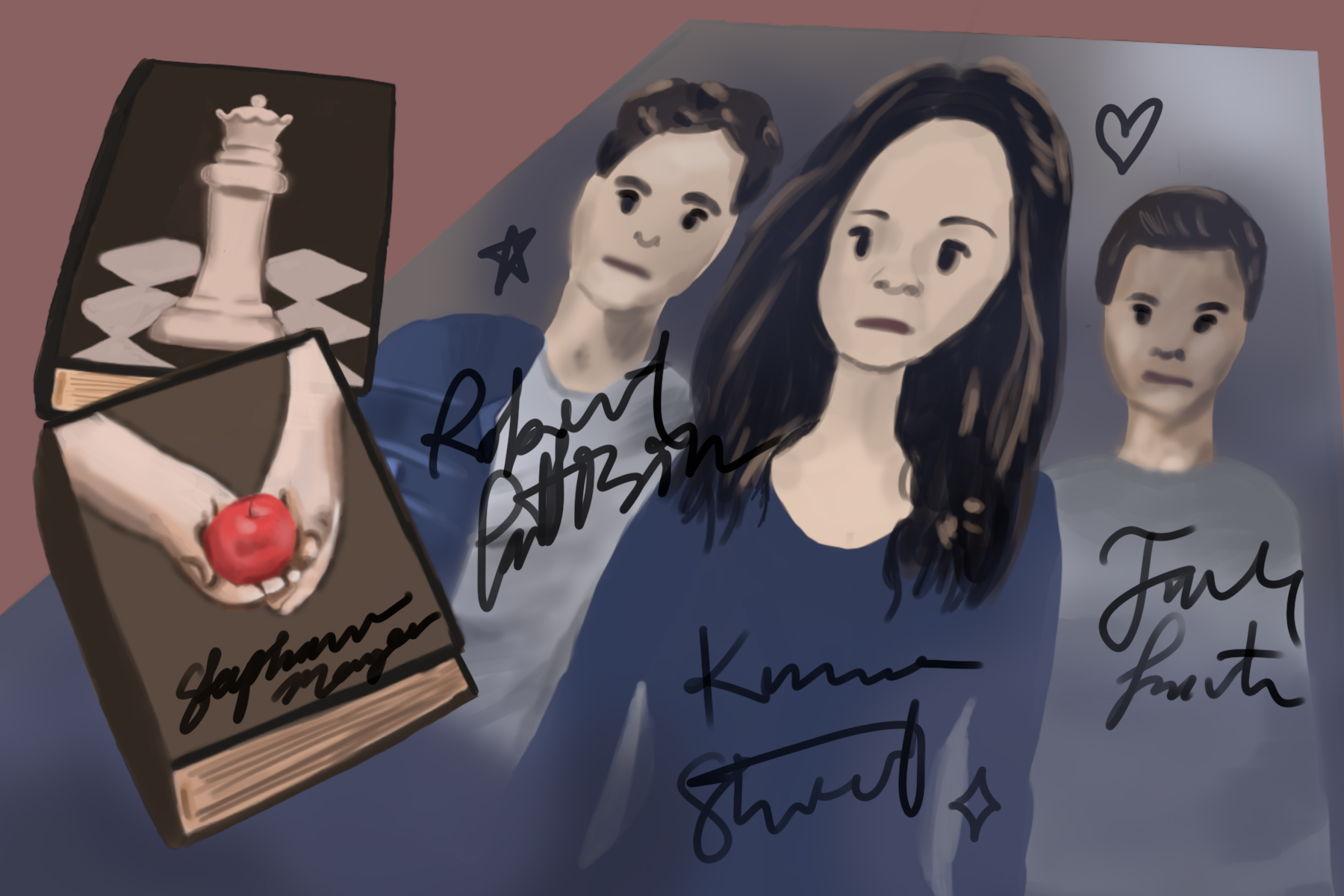Few pieces of pop culture are as fascinating as the “Twilight” series, penned by Stephenie Meyer and released between 2005 and 2008. My relationship with the series is oddly lifelong. My babysitter was a superfan, blaring out the movies’ soundtracks on the way to school. She showed me the first film when I was six, and its sheer intensity and melodrama proved alluring. Of course, my relationship with the saga changed as I grew older. Access to the internet exposed me to the unrelenting hate the franchise received. Every poor-quality joke and meme treated the franchise as the worst bile Hollywood ever spit up. The mainstream media poked frequent fun at the fanbase and its infamous shipping wars.
I was onboard the bandwagon and was excited to hate-watch the series when it dropped on Netflix just a couple of weeks ago. However, upon viewing the five films, I reached a revelation. They were decent, maybe even good. The “Twilight Saga” boasts genuine thematic merit, and when coupled with its massive fan base, has left a significant mark on pop culture. The saga’s portrayal of wish fulfillment lends insight into both its fandom and fan culture in general.
The series centers around Bella Swan, a monotone teenage girl who moves in with her father in Forks, Washington, now the site of many fan pilgrimages. While there, she meets the mysterious Edward Cullen, a century-old vampire masquerading as a teenager. The series chronicles their love story, which incorporates battles with other pale bloodsuckers and shirtless werewolves, including Jacob Black, the third piece of the series’s infamous love triangle. Bella is the cold heart of the series, the catalyst of this sexy supernatural world.
Bella is criticized by viewers for her emotional numbness. Kristen Stewart receives much flak for her acting ability, with her strange facial expressions subject to parody. However, Stewart’s performance matches the demands of the character. Bella is a teenage girl, subject to all the hormones and crises associated. She is lonely, possibly self-destructive. She isolates herself from friends and family, fixating on her romance with Edward. It is Bella’s numb characterization that makes her so fascinating, for what turmoil could be bubbling beneath the surface?
Bella’s characterization comes into play in “New Moon,” the second entry in the series, where she and Edward split up for her protection. Bella falls into depression, as an effective montage illustrates. She then performs dangerous stunts throughout the film in a bid to gain Edward’s attention. Like any adolescent in crisis, Bella does not care about the consequences, only the immediate gratification. The notion of being alone is unbearable to her. She needs escape and companionship.
It is the raw angst that makes Meyer’s protagonist so relatable to the target demographic. Teenagers are isolated people. I say this from experience. They are afraid of reality, the world they are coming into. I was surprised with how much I related to Bella: the awkwardness, the introversion and the wish for a dreamy, mysterious boyfriend; it was all there. Many read works like “Twilight” not to make fun, but, much like Bella, to escape from a world they do not understand.
The connection between Bella and the reader establishes the appeal of “Twilight” — its offer of wish fulfillment. It explains why the franchise has so much passion behind it; young people relate to Bella and her mellow insecurities. Then, they see this relatable person escape from a degrading present for the sake of love and affection. It is every dramatic teenager’s dream. The infamous conflict between “Team Jacob” and “Team Edward” emerges from this wish fulfillment, as passionate fans also take up Bella’s lucrative choice. Bella is a vehicle that viewers need to drive.
The wish-fulfilling aspects of “Twilight” resonate in modern fanbases. One of the most prominent mediums for the expression of fandom is fan fiction, original written material based on specific properties. On a notable fan fiction site, Archive of Our Own, the most popular tags include “relationships,” “romance” and “sexual content.”
Much of the time, such fictions center around self-inserts, original characters that are stand-ins for the reader. Bella Swan could be considered a prototype for this trope, a vehicle that the viewer inhabits. The self-insert often has relationships with fictional characters, such as Edward Cullen. Like Bella, the ordinary self-insert is placed into extraordinary circumstances, logic or consistency be damned.
“Twilight” and modern fandom’s fondness for wish fulfillment extends to the toxic character of the self-insert’s desires, the “Edward” or “Jacob.” Edward and Jacob have issues. Edward acts toxic toward Bella; he gaslights her about specific topics and abandons her at will, often failing to consider her vulnerability. Meanwhile, Jacob exhibits abusive, stalkerish behavior, believing Bella loves him even when she does not.
Both male leads are attractive and “charismatic” and have thus been subject to fan adoration. These leads are the counterpart to the self-insert, the elusive goal. Often, these leads are not kind, as healthy relationships are simply not as exciting. Wish fulfillment is built upon primal desires outside of convention. Toxic romance is just one of these desires. Jacob and Edward, as terrible as they can be, are yet another escape from reality.
Beyond the books and films, the treatment of the “Twilight” fanbase resonates for fans today. As YouTuber Lindsay Ellis discusses, the frequent jokes made about “Twilight,” the same ones I encountered throughout childhood, have roots in misogyny. Society loathes teenage girls and their interests. The abuse these developing minds receive just for enjoying something negatively affects them later in life.
A vital issue in fandom today is gatekeeping, as more seasoned fans feel threatened by the presence of newer generations. The old guard tries to uphold their influence through their extensive knowledge of a given property and shame those who lack the same knowledge. Why is this culture so pervasive? Perhaps wariness of the past is to blame — the tragedy of “Twilight.” Maybe modern fandoms want to avoid the hatred and preserve their passions, even if they become as destructive as the critiques they seek to avoid.
However, the vitriol “Twilight” fans receive can be counteracted by the group’s shared passion. 2018 was an important year for the fandom, commemorating the 10th anniversary of the first film’s release. The zeitgeist surrounding the franchise shifted. Media praised the first film, considering it a milestone for proving female-driven storytelling has a place at the box office. Furthermore, many fans came out of the woodwork, reclaiming their passion. They discussed their years-long shame for enjoying the franchise, now feeling more comfortable in praising it unironically. It is this renaissance that proves “Twilight” and fandom’s most enduring shared quality.
The wish fulfillment of “Twilight” is empowering, even more than romantic, and this is where the series resonates most. A core theme throughout Meyer’s saga is that of agency. Bella spends the series making her own choices, such as whether to join Edward and become a vampire. At the end of “Eclipse,” the third entry in the series, Bella chooses to be changed by Edward. Edward asks her if this is just about him; she says it isn’t. It was not a choice of Edward or Jacob, but of who she wants to be.
The final entry in the series, “Breaking Dawn,” features Stewart’s most charismatic performance. She is fiery, excitable, with a frequent smile throughout. This is a contrast from her angst-ridden beginnings. The turn to vampirism has offered her agency, an escape from mortal isolation. As she states, “After 18 years of being utterly ordinary, I found that I could shine.” The series is a narrative of empowerment because the protagonist chooses her way out of misery.
Likewise, fandoms like that of “Twilight” endure massive criticism, but they have the choice to liberate themselves through their passions. Fandoms are communities, support networks. There is strength in such networks beyond shipping wars or petty gatekeeping. They are supporters, cheerleaders, whether it be for someone’s erotic fan fiction or strange crossover fan art.
As “Twilight” both on and off-screen proves, one should be who they want to be without fear of criticism, the epitome of wish fulfillment. The self-inserts fans construct are vehicles for independence, to think outside of conventions. Just like 6-year-old me or 16-year-old Bella Swan, we seek gateways that can expand the imagination. Whether it’s an attractively toxic boy or an off-beat Stewart performance.

















